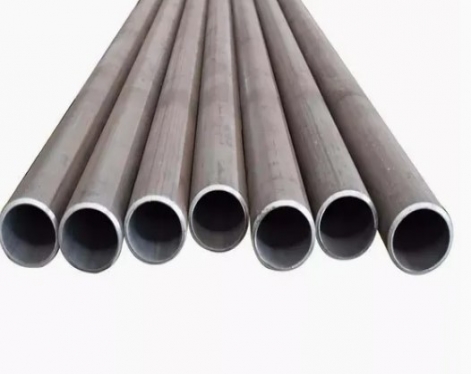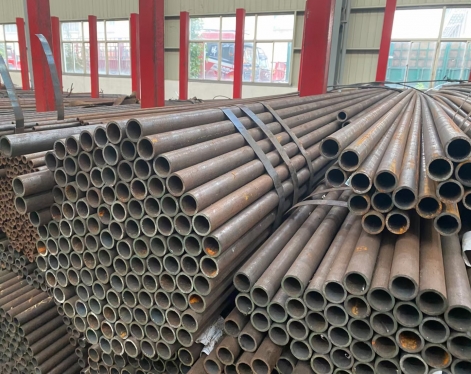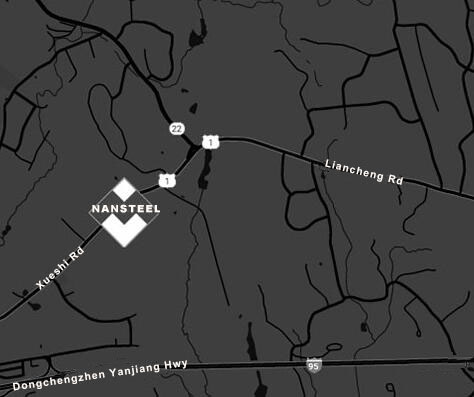There's no fixed timeline for passivation treatment of seamless pipes; it depends on a variety of factors and can range from a few minutes to several dozen minutes.
The purpose of passivation of seamless pipes is to form a dense, stable passive film (primarily chromium-rich oxide) on the metal surface, thereby improving its corrosion resistance. This process is typically performed in an acidic solution.
Factors affecting passivation treatment time
1. Type and concentration of passivation solution
Type of acid: Different passivation liquid components will affect the passivation speed. Commonly used passivation liquids include nitric acid and citric acid. Nitric acid has a fast passivation speed, but is toxic and corrosive; citric acid is more environmentally friendly, but the passivation time is relatively long.
Concentration: The more concentrated the solution, the shorter the time required for passivation.
2. Processing temperature
Temperature is a key factor affecting the rate of chemical reactions. The higher the solution temperature, the faster the passivation reaction and the shorter the time required. However, too high a temperature may lead to over-passivation or corrosion problems.
3. Material of steel pipe
Chromium content: The chromium content in the steel pipe is the core factor affecting the passivation efficiency. The higher the chromium content, the easier it is to form a dense passivation film, and the passivation time may be shorter.
Surface condition: Whether the steel pipe surface has been polished, pickled or degreased will directly affect the passivation effect and time. The cleaner and smoother the surface, the more uniform the passivation reaction and the shorter the time required.
4. Final standard requirements
Different industry standards have different requirements for passivation effects. For example, pipes used in the food or medical industries may have more stringent passivation requirements than general industrial uses, so longer times or more complex processes may be required.

Common passivation treatment time range reference
Pickling + passivation: In actual production, passivation is usually carried out in combination with pickling.
Pickling (removal of surface scale and rust) may take 6-8 minutes.
Passivation (forming the passive film) may take anywhere from 4-5 seconds to over 20 minutes.
Citric acid passivation: Usually requires a longer soaking time, which may be between 20 minutes and 1 hour.
Nitric acid passivation: Faster, may only take a few minutes to 10 minutes.
Conlusion
Therefore, the passivation treatment time of seamless steel pipes is not a fixed value. It is a comprehensive process parameter that needs to be determined according to the specific material, passivation liquid, temperature and final product requirements. In actual production, small batch tests are usually used to determine the optimal passivation time and process parameters to ensure a balance between efficiency and quality.
If you need to order or use seamless steel pipes that have been passivated, be sure to ask the supplier for the relevant quality certificate (MTC) to confirm whether the passivation standards and test results they implement meet your requirements.
Read more: Passivation of seamless tubes
The purpose of passivation of seamless pipes is to form a dense, stable passive film (primarily chromium-rich oxide) on the metal surface, thereby improving its corrosion resistance. This process is typically performed in an acidic solution.
Factors affecting passivation treatment time
1. Type and concentration of passivation solution
Type of acid: Different passivation liquid components will affect the passivation speed. Commonly used passivation liquids include nitric acid and citric acid. Nitric acid has a fast passivation speed, but is toxic and corrosive; citric acid is more environmentally friendly, but the passivation time is relatively long.
Concentration: The more concentrated the solution, the shorter the time required for passivation.
2. Processing temperature
Temperature is a key factor affecting the rate of chemical reactions. The higher the solution temperature, the faster the passivation reaction and the shorter the time required. However, too high a temperature may lead to over-passivation or corrosion problems.
3. Material of steel pipe
Chromium content: The chromium content in the steel pipe is the core factor affecting the passivation efficiency. The higher the chromium content, the easier it is to form a dense passivation film, and the passivation time may be shorter.
Surface condition: Whether the steel pipe surface has been polished, pickled or degreased will directly affect the passivation effect and time. The cleaner and smoother the surface, the more uniform the passivation reaction and the shorter the time required.
4. Final standard requirements
Different industry standards have different requirements for passivation effects. For example, pipes used in the food or medical industries may have more stringent passivation requirements than general industrial uses, so longer times or more complex processes may be required.

Common passivation treatment time range reference
Pickling + passivation: In actual production, passivation is usually carried out in combination with pickling.
Pickling (removal of surface scale and rust) may take 6-8 minutes.
Passivation (forming the passive film) may take anywhere from 4-5 seconds to over 20 minutes.
Citric acid passivation: Usually requires a longer soaking time, which may be between 20 minutes and 1 hour.
Nitric acid passivation: Faster, may only take a few minutes to 10 minutes.
Conlusion
Therefore, the passivation treatment time of seamless steel pipes is not a fixed value. It is a comprehensive process parameter that needs to be determined according to the specific material, passivation liquid, temperature and final product requirements. In actual production, small batch tests are usually used to determine the optimal passivation time and process parameters to ensure a balance between efficiency and quality.
If you need to order or use seamless steel pipes that have been passivated, be sure to ask the supplier for the relevant quality certificate (MTC) to confirm whether the passivation standards and test results they implement meet your requirements.
Read more: Passivation of seamless tubes









